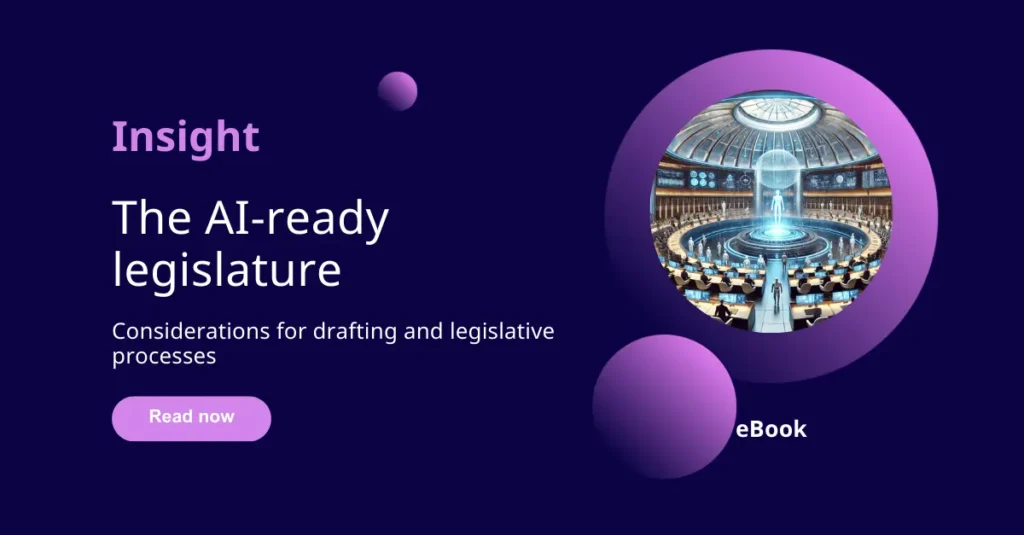As society moves deeper into the digital age, the way people access and trust legal information is fundamentally shifting.
Throughout history, the master version of the law has traditionally been preserved in a physical format. From state statutes, regulations, and legislative materials printed and stored in libraries, to ancient inscriptions, the physical copy has long been the definitive source of legal truth.
However, today, people expect instant online access to official legal records – mirroring how they engage with banking, shopping, news, and entertainment. This digital shift brings not only convenience, but also new risks, including misleading actors, deepfakes, AI-generated misinformation, and other digital threats that can compromise trust.
For legislatures, the goal is no longer just digital access, it is ensuring digital authenticity.
What is the Uniform Electronic Legal Material Act (UELMA)?
UELMA provides a legal framework to ensure that official online legal documents are authenticated, preserved, and accessible over time.
While UELMA sets the policy framework, the success in ensuring trustworthy and accessible online legal information hinges on thoughtful and effective implementation by individual states.
By enacting UELMA with a considered and well-structured approach, states can establish this official digital version of the law, ensuring it is tamper-proof, verifiable, and reliable for future generations.
Legislatures that act now can build the infrastructure necessary to protect legal materials and strengthen public trust and accessibility in the digital era.
The tools exist. The policy framework is in place. Now, it is about execution.
Digital is no longer a ‘nice to have’
For many years, digital legal documents have been viewed as helpful references but not as official records. In cases of discrepancy, the print version prevailed in court. That model is no longer sustainable in the digital era.
Today:
- The average adult spends approximately seven hours per day online
- People expect real-time access to public information, including the law
- Digital content is widely perceived by the public as both current and official
In this context, relying solely on paper is no longer practical nor secure. Additionally, having a digital version that cannot be authenticated creates more than a gap, it creates risk.
Fixity, provenance, and trust in the digital record
In the print era, fixity was built into the format – a stamped, signed, physical copy stored in a secure archive. In the digital world, the concept of ‘the copy’ is more fluid. A minor, even accidental, change to a legal document, such as a misplaced word or punctuation mark, can have significant consequences.
The pillars for success include:
- Provenance: A transparent chain of custody from bill draft through to enactment
- Integrity: Confidence that published materials are complete and unaltered
- Authentication: The ability for anyone to verify that the legal content they are accessing is official
UELMA supports each of these principles, but only when correctly implemented.
Building the infrastructure for digital trust
Modern generative AI (GenAI) tools can produce convincing, but entirely fake, legal materials in seconds. In today’s digital era, even a well-intentioned search can lead to misinformation.
While Large Language Models (LLMs) related challenges, such as hallucinations and deepfakes, cannot be eliminated, legislatures can take proactive steps to safeguard legal integrity:
- Establish a trusted digital source
Maintain an official, publicly accessible online destination for legal documents, ensuring findability and trust. - Implement document authentication
Use cryptographic hashes, digital signatures, and standards-based technology to authenticate documents, while ensuring the verification methods are accessible to the public. - Preserve the digital record
Adopt standards-based publishing tools and archival formats aligned with ISO recommendations to ensure long-term usability. - Improve structure and searchability
Structure your legal content with metadata and information architecture that allows both human users and AI systems to identify and trust official sources. - Educate users on verification
Assist the public in understanding how to identify authenticated documents, and the importance of using official sources.
Together, these steps enable legislatures to empower the public, protect the integrity of the law, and lay the foundation for trustworthy legal systems in a digital future.
UELMA in action: Tools that enable trust
UELMA offers the policy foundation, and the technology to implement it is already available.
The most effective implementations of UELMA rely on technologies like cryptographic hashes and HTTPS:
- A hash is a digital fingerprint – a unique code generated from the exact bits and bytes of a document
- If one character is altered, even a single comma, the fingerprint no longer matches
- When the hash is published alongside the document, users (and software) can easily validate the document they are viewing
Paired with HTTPS protocols, hash-based authentication assists legislatures with creating a digital infrastructure that is transparent, secure, and resilient.
This approach is scalable, standards-based, and already endorsed by UELMA. It empowers legislatures to deliver a reliable foundation not only for the public, but also for AI systems increasingly tasked with interpreting and summarizing the law.
A path forward
The tools exist. The policy framework is in place. Now, it is about execution.
By implementing UELMA with practical, standards-driven solutions, legislatures can build a digital legal environment that is trustworthy, accessible, and future-ready.

